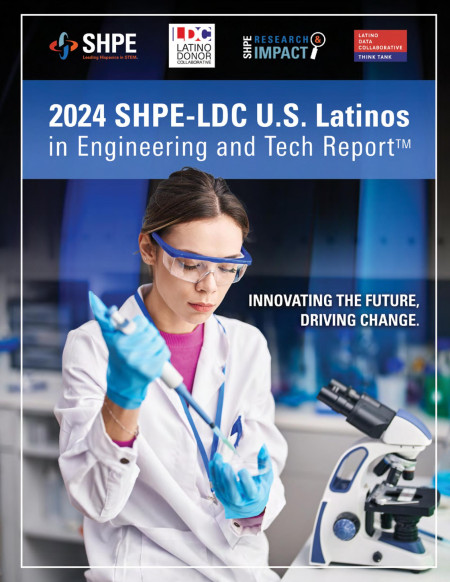Hispanics Critical to Meeting U.S. Projected Demand for 11.8 Million STEM Professionals by 2030, According to New Report From SHPE & LDC
SHPE and Latino Donor Collaborative released a report with key facts showcasing a 60% increase for Hispanics in AI technical roles and rising STEM degrees for Latinos that help drive the U.S. economy forward.

LOS ANGELES, February 19, 2025 (Newswire.com) - A groundbreaking report released by SHPE, a national organization representing 20,000+ Hispanics in STEM, and the Latino Donor Collaborative (LDC), a think tank dedicated to producing research that highlights economic opportunities, reveals that Hispanic students and professionals are critical to filling the projected demand in the U.S. for 11.8 million STEM professionals by 2030 to help drive the country's economy forward.
The "2024 SHPE-LDC U.S. Latinos in Engineering and Tech Report" documents significant progress in Latino representation in engineering education, with undergraduate engineering enrollment increasing by 39% from 2012 to 2022. Engineering degrees awarded to Hispanics rose by 57% during the same period.
"With Hispanics comprising over 25% of America's youth (under 18 years of age) and nearly 16% of undergraduate engineering students, the talent pipeline is critical to filling the projected need for 11.8 million STEM professionals by 2030," SHPE CEO Suzanna Valdez Wolfe said. "Empowering Hispanics with resources and opportunities isn't just an investment in our future - it's essential to meeting America's growing technological demands and contributing to a thriving U.S. economy."
"Latino involvement in engineering and technology is essential for sustaining global competitiveness and driving progress in the U.S. This report offers the most compelling evidence to date that by supporting young people to pursue STEM education, we can effectively eliminate concerns about a shortage of qualified talent," Ana Valdez, CEO and President of LDC, said.
Key findings include:
22% of Hispanics aged 25-34 now hold bachelor's degrees or higher, compared to 16% of those aged 50 and older
Master's degrees in engineering awarded to Latinos increased by 37%, while doctoral engineering enrollment grew by 50% from 2012-2022
Latinos are projected to account for 78% of all net new workers by 2030
Hispanic participation in AI technical roles increased by 59% between 2018 and 2022
SHPE members have a graduation rate of 88%, significantly higher than the national engineering rate of approximately 50%
Latino youth demonstrate strong adaptability and engagement with emerging technologies compared to other groups. Among young Hispanics, 54% use AI for information gathering, while 39% use it for creative applications such as image generation and 27% for music production. This active use of AI lays the foundation for Latinos to transition from users to developers of AI-driven solutions.
Moreover, 64% of respondents are motivated by the opportunity to solve real-world problems, aligning with the values of community and service emphasized in Hispanic culture. For many, earning potential (52%) adds to the appeal, as does the promise of career opportunities (50%) in these fields.
However, challenges remain: The report identifies areas requiring attention, including financial insecurity (affecting 66% of Latino students), housing instability, and the need to increase support and mentorship. The report concludes with recommendations, including expanded mentorship programs, increased STEM funding, and partnerships on internships, career fairs, and initiatives to promote careers in STEM.
Source: SHPE: Leading Hispanics in STEM
